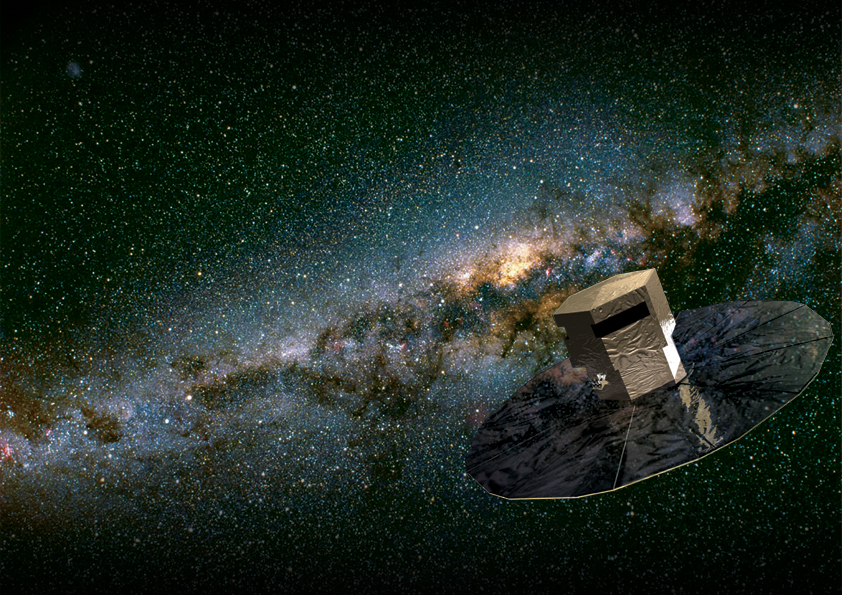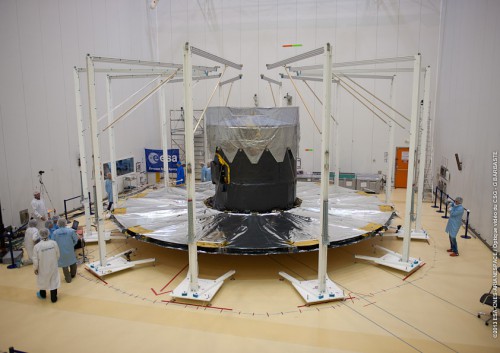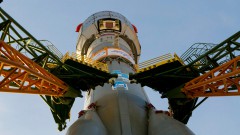
Last week, the European Space Agency (ESA) announced that it will delay the launch of its ambitious Gaia mission to observe and catalog around 1 billion astronomical objects—or approximately 1 percent of the entire population of our Milky Way galaxy—after “a technical issue was identified in another satellite already in orbit.” It was noted that the issue centers on the need to replace a pair of transponders which Gaia will use to generate timing signals and downlink science telemetry. Since the spacecraft is already at the Guiana Space Centre in Kourou, French Guiana, the transponders will be removed and returned to their manufacturer in Europe for replacement, verification, and return to the South American launch site for integration and testing. ESA did not reveal a new launch date for Gaia, but it is anticipated no earlier than mid-December.
Described as “a precautionary measure,” the transponder issue was first picked up by several media outlets early last week, and on Wednesday, 23 October, Spaceflight Now reported that the $1.2 million spacecraft was almost ready to commence fueling at Kourou when the delay was announced. The transponders are built by Thales Alenia and, according to NASASpaceflight.com, the problem may be associated with a transponder issue with the Thales-built O3B network of telecommunications satellites, the first four of which were boosted into a medium Earth orbit in June 2013. “Gaia shares some of the components involved in this technical issue,” noted ESA, “and prompt notification of this problem has allowed engineers working on the final preparations for Gaia’s launch to take additional precautionary measures.”

In response to the problem, ESA has requested Arianespace—the Paris, France-headquartered launch services organization, which operates the Soyuz, Vega, and Ariane 5 vehicles from Kourou—to postpone the launch. Gaia’s opening “launch window” extends from 17 November-5 December, after which a second window opens on 17 December and runs to 5 January 2014. These strict windows are governed by the spacecraft’s requirement to reach a so-called “Lissajous orbit” around the Earth-Sun L2 Lagrangian Point, a position about 930,000 miles (1.5 million km) beyond the Home Planet, at which the gravitational influences of both celestial bodies meet in balance.
Originally targeted for a 20 November launch, atop a Soyuz ST-B booster and Fregat-FT upper stage from Kourou, Gaia is an ambitious $1.2 billion mission to observe 1 billion astronomical objects—equating to about 1 percent of the Milky Way—over 5 years. As part of ESA’s Horizon 2000 Plus program, it continues the astronomical parallax work undertaken by the 1989-launched Hipparcos mission and will analyse each of its target stars no fewer than 70 times. Gaia’s observations will lead to the creation of precise three-dimensional maps of star motions, yielding detailed physical properties, characterizing luminosities, pegging effective temperatures, and compiling databases of gravitational and elemental compositions. In addition to stars and galaxies, half a million quasars will fall under Gaia’s gaze, together with around 1,000 extrasolar planets and objects within our Solar System, including mysterious “Apohele” asteroids, which lurk between Earth and the Sun.

Of its stellar targets, the distances of about 20 million stars will be measured with an accuracy of approximately 1 percent and another 200 million will be measured with an accuracy of 10 percent. Orbiting the L2 Lagrangian Point—which was also occupied by ESA’s now-defunct Herschel observatory and the recently-deactivated Planck space telescope—Gaia will enjoy a very stable thermal environment. Its 35-foot (10-meter) sunshade will be deployed to always face the Sun, thereby cooling its sensitive instruments.
Originally conceived in the early 1990s, following the success of Hipparcos, the Gaia mission steadily progressed through various levels of ESA, gaining Science Programme Committee approval in October 2000 and entering the hardware construction phase—with EADS Astrium as its prime contractor—in February 2006. Its payload includes an astrometry instrument to precisely determine the positions, distances, and proper motions of stellar objects, a photometric instrument to gather spectral data and a radial-velocity spectrometer to determine the velocity of objects. Fine-pointing of the Gaia spacecraft is achieved partly through its virtual absence of moving parts and its rigid silicon-carbon framework, which will neither expand or contract due to temperature variations in space.
Want to keep up-to-date with all things space? Be sure to “Like” AmericaSpace on Facebook and follow us on Twitter: @AmericaSpace



